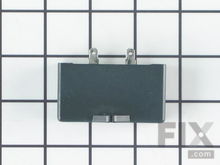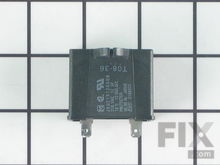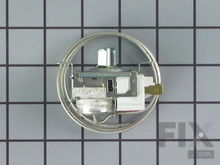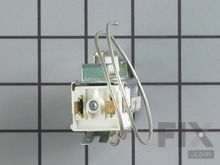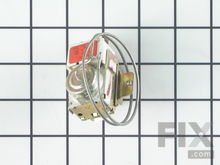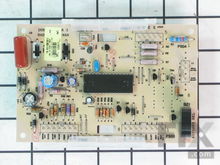How To Repair A Refrigerator That Won't Run
- Rated as EASY
- 365 repair stories
- 3 step by step videos
Overload or Relay Start Capacitor
If your refrigerator is clicking, or if the compressor won’t start even though you can hear the fans running, it’s possible that the overload relay is arcing or overheating. Part of the compressor circuit, the overload protects the compressor by acting as the sensor for the compressor motor windings as power comes in. And until the compressor gets up to speed, the relay connects the compressor’s starting capacitor into the motor windings. If yours is a recent model, the relay and the overload will be housed together and plugged into the side of the compressor, behind the rear access panel. You can unplug the fridge and use a multi-meter to check the relay and overload. Since the relay works with the start capacitor, which gives a start-up power boost to the compressor windings, that might be attached to your combined part as well. Your compressor will not fire up without the start capacitor. Check it for arcing or overheating, and if it is damaged, switch it out for a new one. But if the relay, the overload and the start capacitor all check out ok, the next step will be to call a service technician. The next diagnostic tests will be with live voltage, and for safety’s sake they shouldn’t be done by an amateur.
Cold Control & Temperature Control
When your fridge won’t start and even the fans are not running, it could be due to a problem in the cold control, a switch to send electricity to the fans and compressor that’s triggered by temperature change. This can be checked at the knob used to turn the temperature up and down, found at the control panel on the inside of most fridges; it is the control that includes an “off” setting. Unplug the fridge, take the front panel off the control box, pull the temperature control out of its housing and remove the terminal leads. Then use a multi-meter to check the continuity as you turn the knob down to a colder setting: the switch should close as you turn it down. If that does not happen, you can replace the temperature control.
Electronic Control Board
If you have a newer fridge, the compressor, fans, defrost system, and temperature might all be under the authority of an electronic control board. This makes home repair trickier, because the control boards determine so much, plus an electronic control board is costly and complicated. And for that same reason, it makes sense to eliminate other causes of fridge malfunction before you decided the electronic control board is the broken component. So if the fridge is not starting up, verify that power is not being supplied to the compressor but is being supplied to the control board. Check the external controls. Unplug the fridge and inspect the control board for evidence of burnt connections, deteriorated foil, or signs that arcing has occurred.
More Repair Parts
Still not sure which part is broken? We can offer you custom troubleshooting help if you search with your model number.






